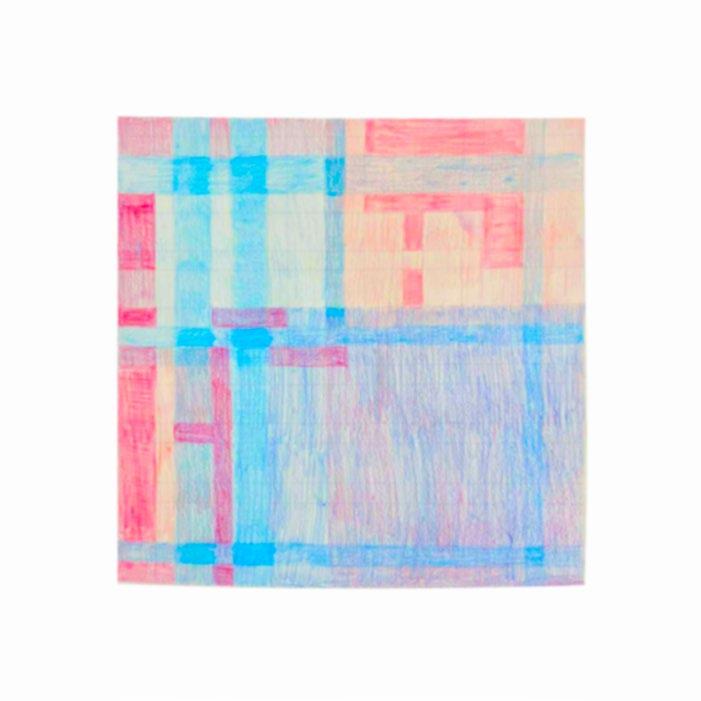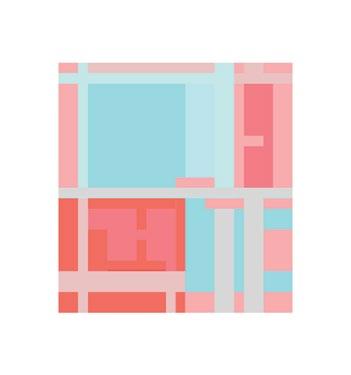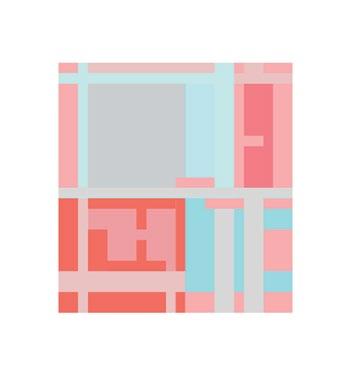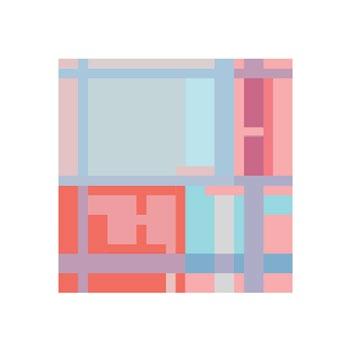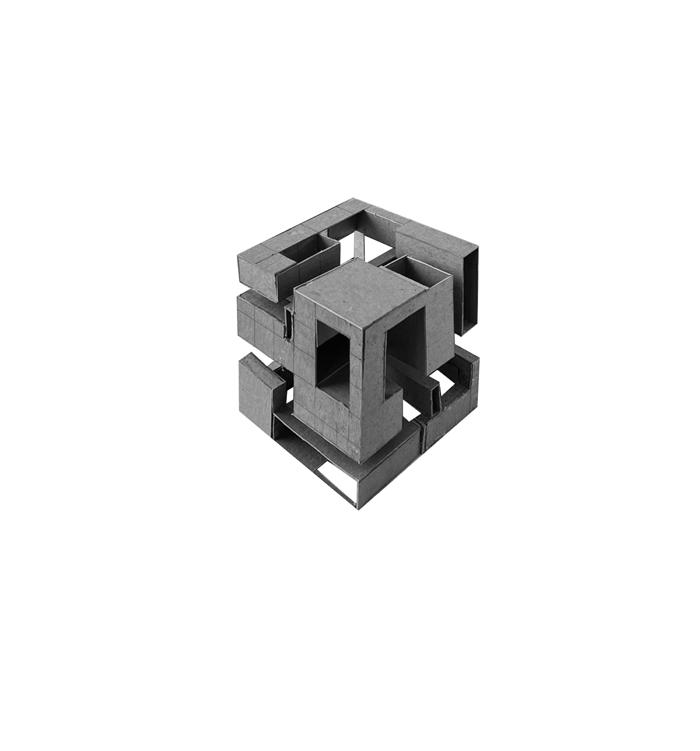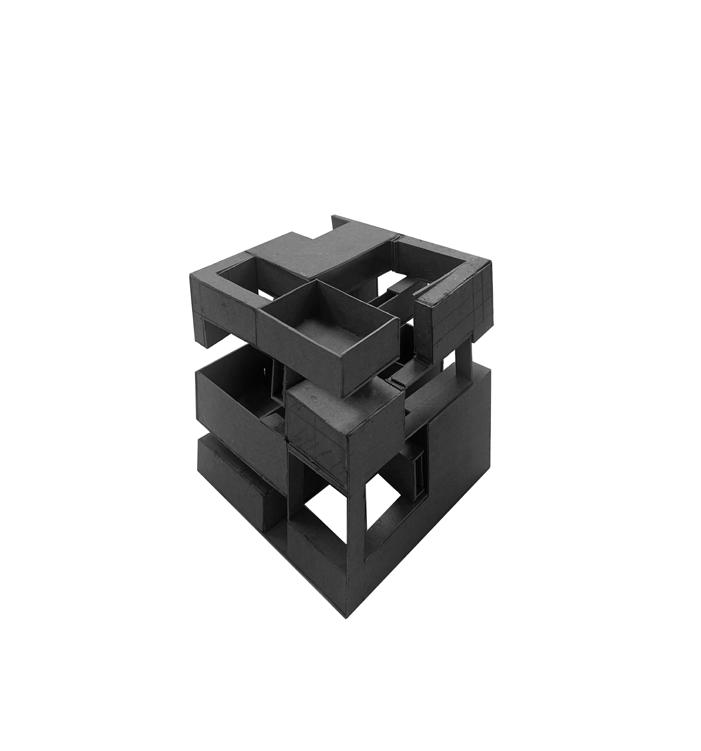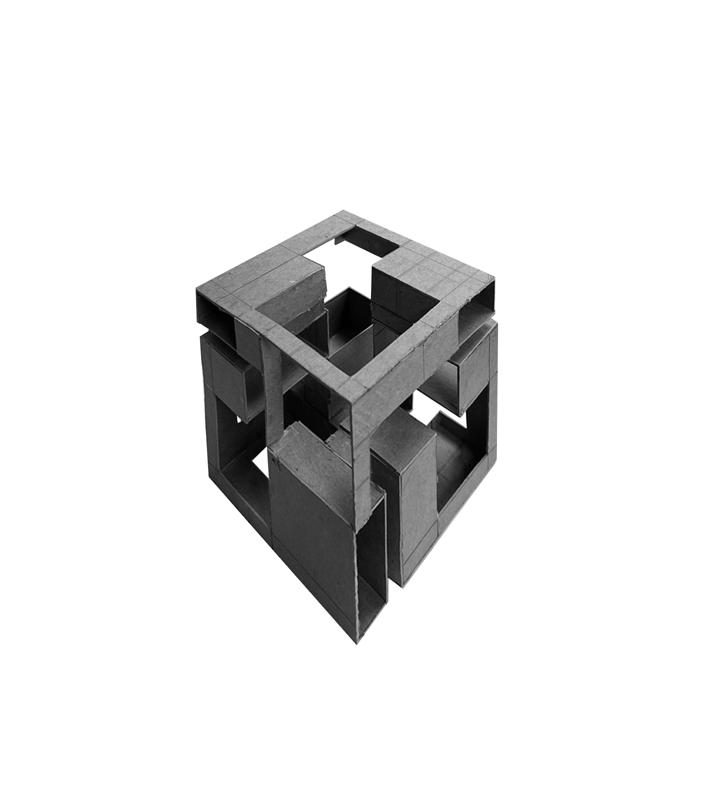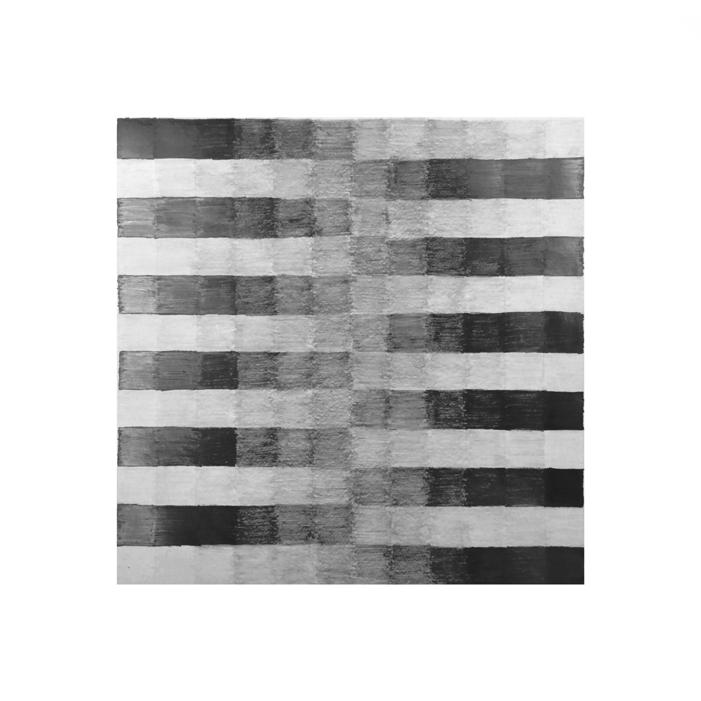
8 minute read
ENDS 115: Design Communication
by davezu22
Foundations
FALL 22 + SPRING 23
Advertisement
Course Description
ENDS 115 Design Communication Foundations
Introduction to and practice of tools, methods, techniques available for graphic communication; graphic communication and the design process; observation and other forms of free-hand drawing and drawing systems that develop representational and descriptive capabilities.
This course consists of studio and lecture classes dedicated to mastering the foundational techniques and skills of architecture and design representation. This course is more technical and is intended to support ENDS 105 which is more creative and explorative.
Special Course Designation
CORE. This course has special designation by the university, college, or department. This is a Core curriculum course in the component area of Creative Arts (KCRA) as defined by the University under its current CORE course.
Course Learning Outcomes
At the end of the semester, students are expected to have a visual vocabulary of drawing and abstract architectonic representation methods and the way they relate to the design process and its presentation. Students should be able to represent existing spaces and buildings in rapid hand sketches as well as descriptive drawings. Students will be expected to represent abstract architectural ideas, spaces, and form through analytical drawings. This course will cover methodologies and workflows for both analog and digital skills used to represent and communicate design. Students should be able to utilize learned skills separately or in combination to visually express analysis, concepts, and ideas. Students should be able to have a good domain of two or more of the drawing methods and techniques used in the course.
Instructional Goals
A successful student in their first semester of their design education will explore several basic communication and representational skills. Upon completion of this course, a student will be able to demonstrate an ability to:
+ To develop the student’s ability to observe and describe space, form and light
+ To develop the student’s ability to represent space, form and light
+ To familiarize the student with spatial and architectural drawing methods and conventions
+ To develop the student’s ability to represent imagined space
+ To familiarize the student with different drawing media and representation techniques
+ To explore methods, media and technique to enhance architectural representation.
+ To stimulate the relationship between architectural representation and architectural intention
Learning Outcomes
Visual Communication
+ Learn and Comprehend the common methods of architectural orthographic representation; Plan, Section, Elevation, Axonometric, Perspective, etc.
+ Learn the basics foundation of graphic design and layout for architectural presentations.
+ Learn diagramming techniques and principles in both digital and analog methods
+ Learn basic architectural sketching to communicate design ideas
+ Learn basic concepts of shade, shadow, line weight, color, and texture.
Problem Solving/Critical Thinking
+ Learn to present Concepts and Ideas both by visual and verbal means
+ Learn basic knowledge of Architectural terminology and concepts
+ Learn to visualize three-dimensional space in relation to ordering principles
Specific Knowledge
+ Learn Digital Skills with software currently used in the development and representation of architectural ideas and concepts.
+ Understand the basic relationship between horizontal and vertical spatial representations
Integration
+ Be exposed to the process of representation required to create built works
Social, Cultural, & Global Competence
+ Understand and Experience the Studio Culture of Architecture education and profession.
+ Understand the role that architecture can play in society and climate
+ Understand the possible social implications of architecture and design.
First-Year Instructors
+Davi Xavier (First Year Coordinator)
+Alejandro Borges (First Year Coordinator)
+Rohit Kumar
+Karrar Osi
+Wonjae Yoo, Ph.D
+Uttamasha Monjoree
+Inwoo Jung
+Xu Chuanyue
+John Ajibefun
Project I: Defining Spaces
In this exercise, you are invited to experiment with Space, Sequence and Hierarchy. The goal is apply previous concepts and continue to work on the process of design with new ideas in place. The compositions in this exercise should build on your understanding and increase your understanding of space making.
Learning Objectives
+ Investigate Defined Space
+ Investigate Implied Space
+ Investigate Hierarchy / Primary, secondary, and tertiary spaces.
+ Investigate Slot Conditions: Continue and Terminated.
+ Investigate Ordering systems / The Grid
+ Investigate Figure-ground composition
+ Investigate Sequence

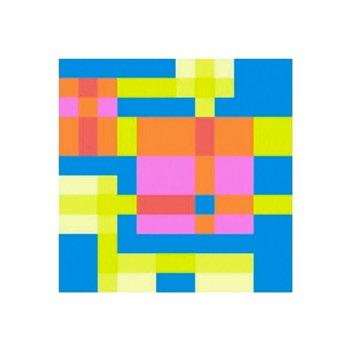


Project II: Defining Spaces
Translations from 2D to 3D
In this exercise, you are invited to experiment with Space, Sequence and Hierarchy now in the threedimensional space. The goal is apply previous concepts from your two dimensional compositions and translate them into three dimensional configurations. Investigate the same principles and concepts now in multiple viewpoints. Continue to work on the process of design with new ideas in place. The physical models created in this exercise should build on your previous attempts and increase your understanding of space making.
Learning Objectives
+ Investigate Defined Space
+ Investigate Implied Space
+ Investigate Hierarchy / Primary, secondary, and tertiary spaces.
+ Investigate Slot Conditions: Continue and Terminated.
+ Investigate Ordering systems / The Grid
+ Investigate Figure-ground composition
+ Investigate Sequence
+ Investigate Perceptions in Three Dimensional space
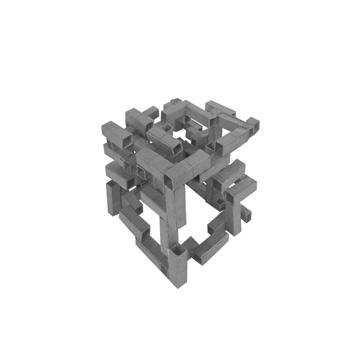







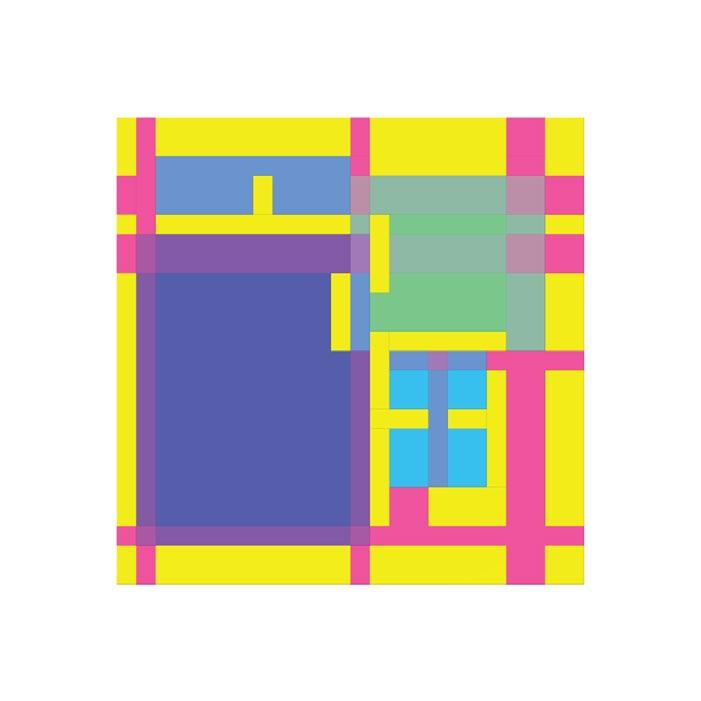


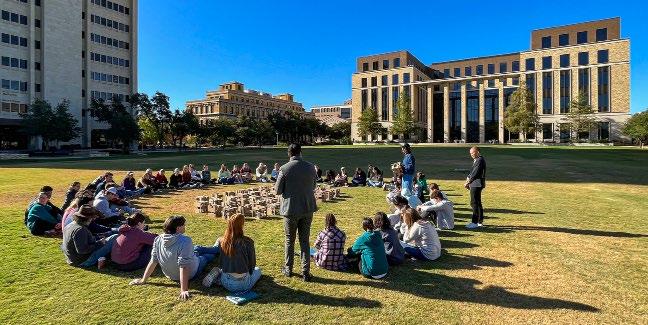

Project III: Scale + Inhabitation
In this exercise, you are invited to explore and reiterate the lessons learned and explorations made in the previous projects. This project is considered a culmination and consolidation of the work completed in the class up to this point. The goal is to apply previous concepts from all prior projects.
Investigate the same principles and concepts now in multiple viewpoints. Solid, Void, Implied Spaces, Defined Spaces, Sequence, Hierarchy, Primary, Secondary, Tertiary, and Slot Conditions are all to be included in this project. Continue to work on the process of design with new ideas in place.
The models created in this exercise should build on your previous attempts and increase your understanding of space making.
Learning Objectives
+ Investigate Defined Space and Implied Space
+ Investigate Hierarchy / Primary, secondary, and tertiary spaces.
+ Investigate Slot Conditions: Continue and Terminated.
+ Investigate Ordering systems / The Grid
+ Resolve elements in the translation from Two to Three Dimensions
+ Investigate Sequence / Inside / Outside
+ Investigate Perceptions in Three-Dimensional space
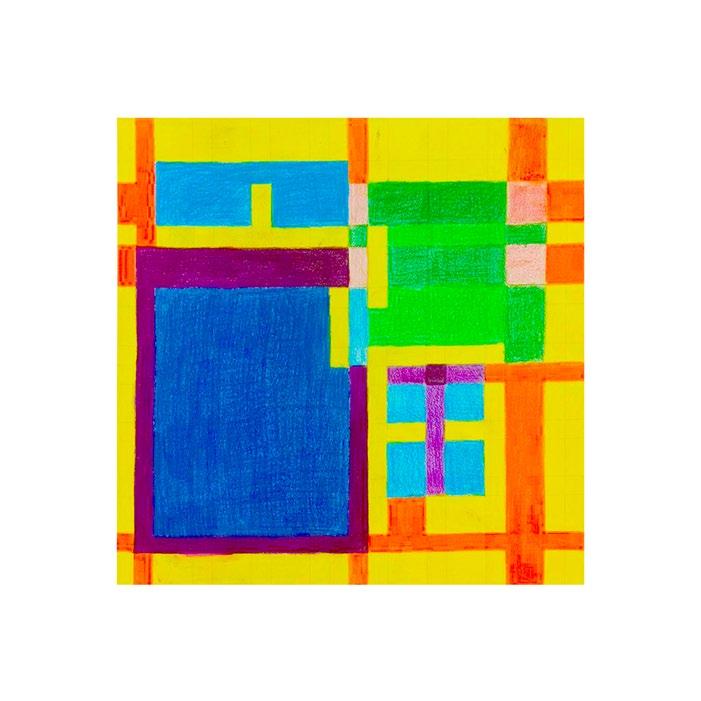
+ Explore the connection of Three-Dimensional spaces within the void
+ Investigate Scale
+ Investigate Site / Neighbors as contextfining spaces

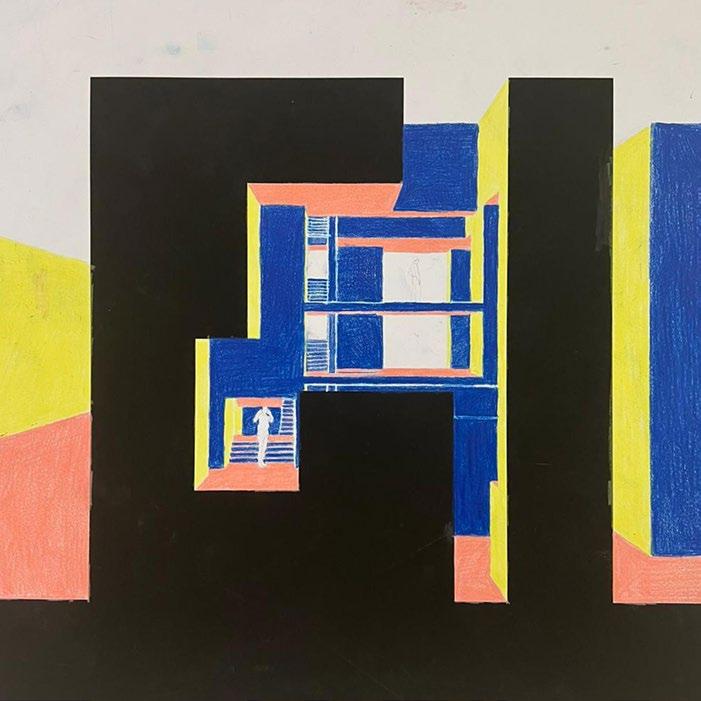
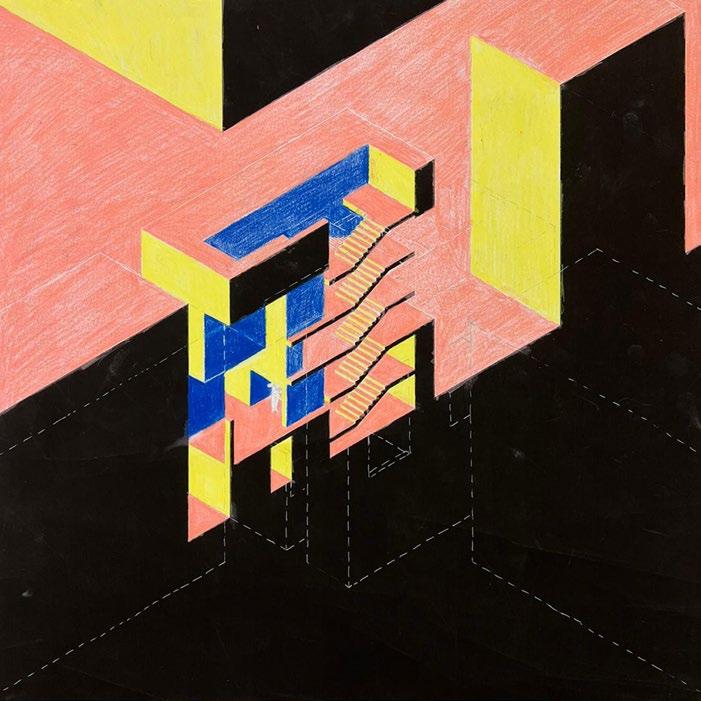



ENDS 108: Design and Visual Communications Foundations II
SPRING 22 + SUMMER 22 + FALL 22
Course Description
Approaches to problem identification and problemsolving emphasizing human, physical and cultural factors influencing architectural design; understanding of space, materiality and tectonics in a human body scale; development of drawing methods with emphasis on analytical drawing; reinforcement of visual and verbal communication as applied to design processes.
This course consists of studio, lecture, and seminar classes dedicated to mastering the foundational techniques of design practice and critical thinking. This course requires serious dedication to your studies; every day you will draw, make models, and engage in reading, writing, and speaking about your work and the work of architecture in general. Throughout this course you will be challenged by your instructors and peers and you are expected to respond to each and every challenge at the reach of your ability. This will be a transformative learning experience. The design studio is a learning environment intended to provoke creative action and critical reflection. It is a place for open-ended exploration. It is a kind of education that fosters great responsibility in the midst of great liberty. In this course, there are seven separate sections. All seven sections adhere to the same syllabus (this syllabus), which outlines the course information and policies, including very specific cognitive learning outcomes. While each section will provide opportunities for students to accomplish those outcomes though project- based learning, the means and methods of the projects will vary at the discretion of the Section Instructors. In other words, while all sections share the same goals for learners, each teacher will pursue those goals through their own unique series of projects. Project or assignment descriptions will be distributed by Section Instructors at the beginning of each project.
Course Learning Outcomes
At the end of the semester, students are expected to have a visual vocabulary of drawing and abstract architectonic representation methods and the way they relate to the design process and its presentation. Students should be able to represent existing spaces and buildings in rapid hand sketches as well as descriptive drawings. Students will be expected to represent abstract architectural ideas, spaces, and form through analytical drawings. This course will cover methodologies and workflows for both analog and digital skills used to represent and communicate design. Students should be able to utilize learned skills separately or in combination to visually express analysis, concepts, and ideas. Students should be able to have a good domain of two or more of the drawing methods and techniques used in the course.
Instructional Goals
A successful student in their first semester of their design education will accomplish several basic but far-reaching learning outcomes. Upon completion of this course, a student will be able to demonstrate an ability to.
+ define, debate, and defend the basic premises of a design project.
+ develop a project using a critical and rational iterative method
+ manipulate two- and three- dimensional materials and geometries
+ create and evaluate works of design using formal concepts, including the concepts of interval, ratio, proportion, contrast, hierarchy, rhythm, scale, etc.
+ interpret a project using conventional forms of orthometric drawing, including plan, elevation, and section, as well as the techniques of lineweight and line type
+ Analyze, evaluate, and comprehend the context of architecture which includes site and urban location, but also the cultural, societal, historical, and theoretical context of architecture.
+ Understanding the use of analytical methods through precedent analysis as a conceptual base to develop a project using a critical and rational method.
+ Understand and implement the various ordering principles of architecture and how they can influence design (Operations of Design)
Learning Outcomes Related
to Visual Communication
+ Learn/Introduced to the current techniques of digitally driven design.
+ Architecture Verbal Communication skills. Ability to talk architecturally about a project within the discipline.
+ Develop strategies for digital modeling and drawing skills (organization, editing, resolutions, purpose…)
+ Drawing Skills: Plan, Section, elevation, Axonometric. linework, line weight.
+ Mediums | Analog | drawing and model making understanding materials.
+ Digital: Understanding Basic Computer Aided Design, representation methods and skills as well as basic modeling.
+ Understanding the application of digital workflows.
Related to Problem Solving/Critical Thinking
+ Effectively accomplish some reading comprehension from the discipline along with crafting discussion, positioning, arguments (verbal & spatialized).
+ Basic understanding of program and its flexibility.
+ Diagramming: Conceptual understanding of buildings through formal analysis.
+ Learn to present Concepts and Ideas both by visual and verbal means.
+ Learn basic knowledge of Architectural terminology and concepts.
+ Learn to visualize three-dimensional space in relation to ordering principles.
+ Effectively accomplish some reading comprehension from the discipline along with crafting discussion, positioning, arguments (verbal & spatialized).
+ Basic understanding of program and its flexibility.
Related to Specific Knowledge
+ Understanding of figure, space and volume.
+ Understanding of the ordering principles of architecture through design operations.
+ Understanding the grid as an ordering and proportioning system.
+ Gain awareness of the power of precision by making refined models in tandem to defining premises of their work.
+ Understanding of the problem of scale.
+ Learn Digital Skills with software currently used in the development and representation of architectural ideas and concepts.
+ Understand the basic relationship between horizontal and vertical spatial representations. Related to Integration
+ Make a coherent correlation among spatial, structural and organizational systems.
+ Exposure to concepts of structure in architectural design.
+ Make a coherent correlation among Basic structural concepts, materiality, lighting, energy flow, passive ventilation
+ Be exposed to the process of representation required to create built work.
+ Exposure to concepts of structure in architectural design.
Related to Social, Cultural, & Global Competence
+ Understand and Experience the Studio Culture of Architecture education and profession.
+ Understand the role that architecture can play in society and climate
+ Understand the possible social implications of architecture and design.
+ Understanding of the problem of the site.
+ Understanding of the problem of the context.
First-Year Instructors
+Davi Xavier (First Year Coordinator)
+Alejandro Borges (First Year Coordinator)
+Livia Loureiro
+Se Woong Kim, Ph.D
Project I: Defining Space + Transparency
In this exercise, you are invited to experiment with Space, Sequence, Hierarchy and Transparency. The goal is apply previous concepts and continue to work on the process of design with new ideas in place. The compositions in this exercise should build on your understanding and increase your understanding of space making.
Learning Objectives
+ Investigate Defined Space
+ Investigate Implied Space
+ Investigate Hierarchy / Primary, secondary, tertiary spaces.
+ Investigate Slot Conditions: Continue and Terminated.
+ Investigate Ordering systems / The Grid
+ Investigate Figure-ground composition
+ Investigate Sequence
+ Investigate notions of Transparency, overlapping fields and layering.
+ Understand and apply methods that color can impact design and creation in architecture.
